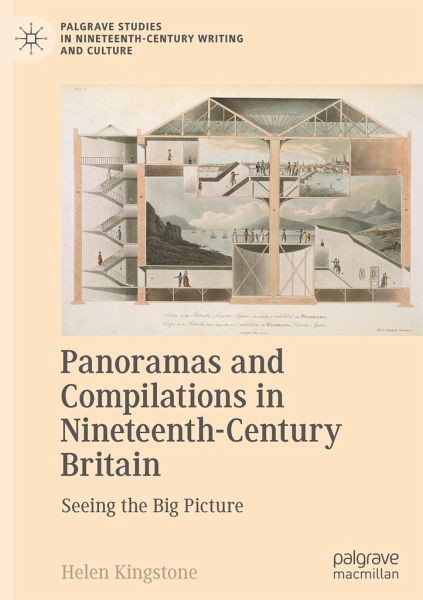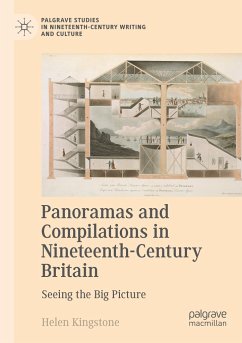
Panoramas and Compilations in Nineteenth-Century Britain
Seeing the Big Picture
Versandkostenfrei!
Versandfertig in 1-2 Wochen
104,99 €
inkl. MwSt.
Weitere Ausgaben:

PAYBACK Punkte
52 °P sammeln!
1. Introduction: Overviews of the Present.- Part I: Panoramic Perspective.- 2. Contemporary History in Panoramas.- 3. Panoramic Perspective in Histories of the French Revolution: Thomas Carlyle Versus Archibald Alison.- 4. The Napoleonic Wars from Near and Far: Thomas Hardy's The Trumpet-Major and The Dynasts.- Part II Transition: Between Panoramas and Compilations.- 5. Photography Remediated in the Crimean War: Illustration, Exhibition and Collection.- Part III: Big data: Compilations of Contemporaneity.- 6. An Index to the Scale of Modernity: Big Data and The Review of Reviews.- 7. Ephemeral...
1. Introduction: Overviews of the Present.- Part I: Panoramic Perspective.- 2. Contemporary History in Panoramas.- 3. Panoramic Perspective in Histories of the French Revolution: Thomas Carlyle Versus Archibald Alison.- 4. The Napoleonic Wars from Near and Far: Thomas Hardy's The Trumpet-Major and The Dynasts.- Part II Transition: Between Panoramas and Compilations.- 5. Photography Remediated in the Crimean War: Illustration, Exhibition and Collection.- Part III: Big data: Compilations of Contemporaneity.- 6. An Index to the Scale of Modernity: Big Data and The Review of Reviews.- 7. Ephemeral Collective Biography: Men of the Time (1852-99).- 8. Collective Biography as Monument? The Dictionary of National Biography.- 9. Conclusions: Overview Through Immersion.














